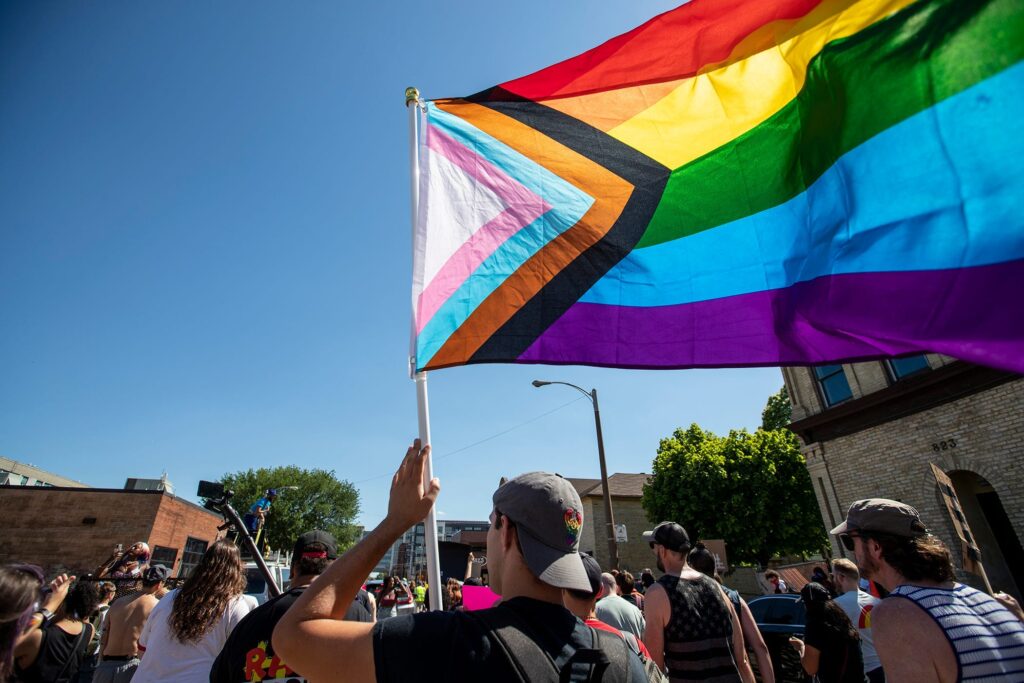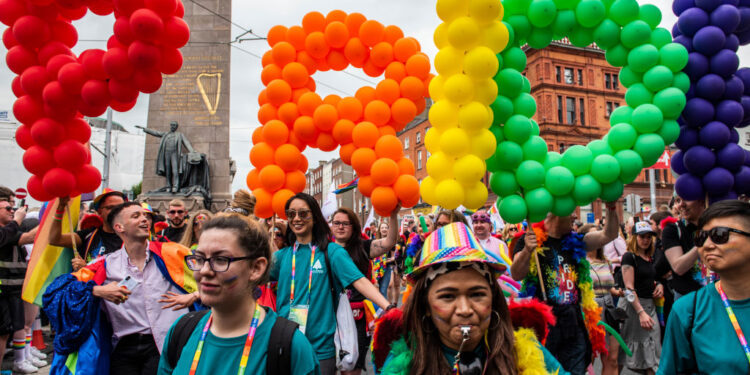Introduction of pride day

The pride day parade starts at noon on Sunday, June 25. The parade will start near Montrose and Broadway in the city’s Uptown neighbourhood. Finish near Diversey Parkway and Sheridan Road in Lincoln Park. The Chicago Pride Parade is Sunday. It steps off at noon Sunday from Montrose Avenue. Broadway and ends at Diversey Parkway and Sheridan Road. Best bet to get there: Take public transportation rather than drive, and expect the L to be packed.
“Pride” is the designated name or slogan that commemorates the anniversary of the Stonewall Inn Riots. It started in 1970, a year after the Stonewall Inn Riots took place. As a peaceful march with no dress restrictions where people could express themselves and their sexuality freely. There have been peaceful marches, protests and celebrations every year since. To get a good spot, head there early.
The first parade was organised on Saturday, June 27, 1970, as a march from Washington Square Park (“Bughouse Square”) to the Water Tower. But then many of the participants spontaneously marched on to the Civic Center Plaza.
Pride and LGBTQ
The first parade to commemorate the Stonewall Riots was originally called the Christopher Street Liberation Day. March after the committee that planned it. Committee member and activist Craig Schoonmaker was the first to suggest using the term “pride.” The federal government first recognized the month in 1999 when President Bill Clinton declared June “Gay & Lesbian Pride Month.”In 2009, President Barack Obama declared June LGBT Pride Month.
On 1 June 2021, President Joe Biden declared June LGBTQ Pride Month. In the late 1970s, Harvey Milk – a member of the San Francisco Board of Supervisors and the first openly gay man elected to public office. He asked his friend Gilbert Baker to design a symbol to represent (what was then referred to as) the gay community.

An acronym used to describe lesbian, gay, bisexual, transgender, queer or questioning persons or the community. LGBT is an initialism that stands for “lesbian, gay, bisexual, and transgender”. In use since the 1990s, the initialism, as well as some of its common variants. Functions as an umbrella term for certain sexualities and gender identities. This term is an adaptation of the initialism LGB, which began to replace the term gay (or gay and lesbian) in reference to the broader LGBT community beginning in the mid-to-late 1980s.
When not inclusive of transgender people, the shorter term LGB is still used instead of LGBT. It may refer to anyone who is non-heterosexual or non-cisgender, instead of exclusively to people who are lesbian, gay, bisexual, or transgender. To recognize this inclusion, a popular variant, LGBTQ, adds the letter Q for those who identify as queer. Or Qare questioning their sexual or gender identity. The initialisms LGBT or GLBT are not agreed to by everyone that they are supposed to include.
About LGBTQ
LGBTQ+ history can be traced all the way back to ancient Greece and various parts of the world. Depending on the region, area and culture of the people who lived there. This activism is still going on today. Multiple organisations are still fighting for rights in multiple states for different reasons. Understanding the appropriate terminology is essential to understanding LGBTQ individuals.
Sexual orientation, sexual behaviour, gender identity, and gender role are different concepts. This is the affectionate or loving attraction to another person. Heterosexuality is the attraction to persons of the opposite sex; homosexuality, to persons of the same sex; and bisexuality, to both sexes.
Sexual orientation can be considered as ranging along a continuum from same-sex attraction only at one end of the continuum to opposite-sex attraction. At the other end sexual behaviour, or sexual activity, differs from sexual orientation and alone does not define someone as an LGBTQ individual.
Sexual identity is the personal and unique way that a person perceives his or her own sexual desires and sexual expressions.
Biological sex is the biological distinction between men and women. Gender is the concept of maleness and masculinity or femaleness and femininity. Gender identity is the sense of self as male or female and does not refer to one’s sexual orientation or gender role. Gender role describes the behaviours that are viewed as masculine or feminine by a particular culture.
Transgender individuals are those who conform to the gender role expectations of the opposite sex or those who may clearly identify their gender as the opposite of their biological sex.
In common usage, transgender usually refers to people in the transsexual group that may include people who are contemplating or preparing for sexual reassignment. A transgender person may be sexually attracted to males, females, or both.
Pride Flag

The rainbow flag (also known as the LGBT pride flag) is a flag that is used as a symbol of lesbian, gay, bisexual, transgender, and queer (LGBTQ) pride and LGBTQ social movements. Created in 1978 by Gilbert Baker, the iconic Pride Rainbow flag originally had eight stripes. The colours included pink to represent sexuality, red for healing, yellow for sun, green for serenity with nature, turquoise for art, indigo for harmony and violet for spirit.
Colour meanings: The initial rainbow flag had eight colours, including pink to represent sex, red for life, orange for healing, yellow for sunlight, green for nature, turquoise for art, indigo for harmony, and violet for spirit. Today, all of the original colours remain except for pink and turquoise. Baker and Segerblom’s flag debuted at the Gay Freedom Day Parade in SF in 1978.
Each of the original eight colours had their own unique symbolism. Hot pink: sex; Red: life; Orange: healing; Yellow: sunlight; Green: nature; Turquoise: magic and art; Indigo: serenity; and Violet: spirit. The original flag’s hot pink and turquoise stripes were soon removed because of difficulty manufacturing and/or dying the fabric, resulting in the six-colour rainbow flag we are familiar with today.
for more click here
https://www.google.com/amp/s/m.timesofindia.com/entertainment/english/music/news/taylor-swift-kicks-off-pride-month-with-they-are-loving-who-they-want-to-love-speech-at-chicago-concert/amp_articleshow/100727344.cms



